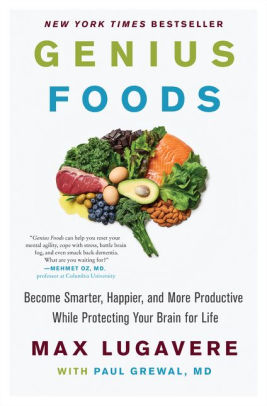Free download.
Book file PDF easily for everyone and every device.
You can download and read online Newer Methods of Nutritional Biochemistry V5: With Applications and Interpretations: v. 5 file PDF Book only if you are registered here.
And also you can download or read online all Book PDF file that related with Newer Methods of Nutritional Biochemistry V5: With Applications and Interpretations: v. 5 book.
Happy reading Newer Methods of Nutritional Biochemistry V5: With Applications and Interpretations: v. 5 Bookeveryone.
Download file Free Book PDF Newer Methods of Nutritional Biochemistry V5: With Applications and Interpretations: v. 5 at Complete PDF Library.
This Book have some digital formats such us :paperbook, ebook, kindle, epub, fb2 and another formats.
Here is The CompletePDF Book Library.
It's free to register here to get Book file PDF Newer Methods of Nutritional Biochemistry V5: With Applications and Interpretations: v. 5 Pocket Guide.
With Applications and Interpretations Anthony Albanese (16) Pea(P1'sumsativum) (5) Pinto bean (Phaseolus.
Table of contents
- Campbell biology final exam questions
- Aseptic Laboratory Techniques: Plating Methods | Protocol
- Nutritional Biochemistry and Pathology
- Nutritional Assessment
Export document as PDF file. Annex 8. Biochemical assessment of micronutrients Assessment of thiamine deficiency The clinical signs of beriberi are described in Chapter 2, but there are several biochemical and other methods that provide a more sensitive assessment of thiamine status. Assessment of niacin deficiency The clinical signs of pellagra are described in Chapter 2, but there are biochemical and other methods that provide a more sensitive assessment of niacin status.
Expand Document.
Full TOC. Chapter 1. Meeting nutritional requirements.
Meeting nutritional requirements in emergency situations - principles. Meeting energy and protein requirements. Meeting micronutrient and other specific nutrient requirements. Monitoring the adequacy of food access and intake. Chapter 2. Major nutritional deficiency diseases in emergencies. Protein-energy malnutrition. Causes and consequences.
Symptoms and signs. Micronutrient deficiencies and nutritional relief. Iron deficiency and anaemia. Iodine deficiency. Vitamin A deficiency, including xerophthalmia. Vitamin C deficiency scurvy. Vitamin B 1 , deficiency beriberi. Niacin deficiency pellagra. Vitamin D deficiency rickets. Chapter 3.
- The Management of Nutrition in Major Emergencies: Annex 8. Biochemical assessment of micronutrients.
- Jewish War Heroes [1];
- Aseptic Laboratory Techniques: Plating Methods?
- Best Bar Prep: Trusts: (e book) (Borrowing Allowed).
Assessment and surveillance of nutritional status. Reasons for measuring malnutrition in emergencies. Indicators of malnutrition. Body measurement indicators. Clinical and other indicators of malnutrition. Using body measurement indicators. Classification of malnutrition. Rapid nutritional surveys. Objectives and data required. Indicators and sampling methods to be used. Data collection forms and analysis sheets. Survey personnel: selection and training.
Organizing fieldwork.
Analysis, interpretation, and reporting of survey results. Individual screening. Objectives, methods, and criteria. Who is to he screened. Personnel and equipment. Procedure: organizing screening sessions.
Campbell biology final exam questions
Nutritional surveillance. Periodic nutritional surveys. Periodic screenings. Records from supplementary and therapeutic feeding centres and health clinics. Health surveillance.
Aseptic Laboratory Techniques: Plating Methods | Protocol
Chapter 4. Nutritional relief: general feeding programmes. General principles. Factors that affect ration levels and composition. Foods for general distribution. Organizing general dry ration distributions. Ration cards. General ration distributions in camp situations. General ration distributions in villages. Distributions among populations. Large-scale cooked food distribution.
Types and quantities of cooked food for distribution. Facilities for cooked food distribution. Hygiene and food storage. Cooking fuel. Organization of distribution. Monitoring the effectiveness of a feeding programme. Chapter 5. Nutritional relief: selective feeding programmes. Supplementary feeding.
Nutritional Biochemistry and Pathology
When to start a supplementary feeding programme. Blanket supplementary feeding programme.

Targeted supplementary feeding programme. Type of feeding programme: wet or dry. When to close down a supplementary feeding programme. Foods and rations for supplementary feeding. Selection of beneficiaries. Supplementary feeding centres. Ration cards and attendance records. Complementary public health interventions.
Nutritional Assessment
Therapeutic feeding of children. Therapeutic feeding centres. Admission criteria. General procedures for treatment of severe PEM. General procedures for therapeutic feeding. Preparation of feeding mixtures for therapeutic feeding. Administering the food. Medical care and medicines. Signs of recovery. Criteria for discharge. Organizing a therapeutic feeding centre. Treatment of severe wasting and famine oedema adult kwashiorkor in adolescents and adults.
Initial treatment phase. Rehabilitation phase. Chapter 6. Prevention, treatment, and control of communicable diseases. General disease-prevention measures.